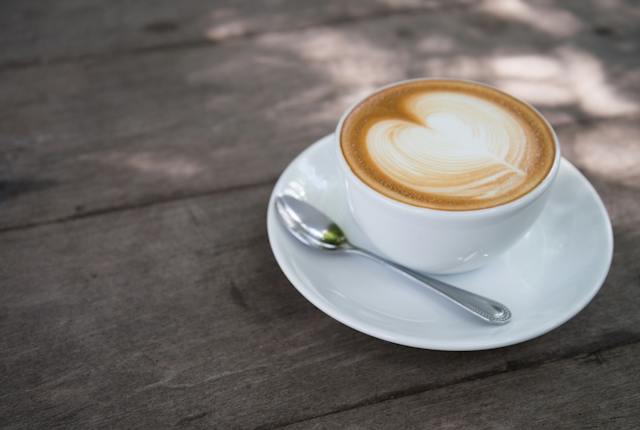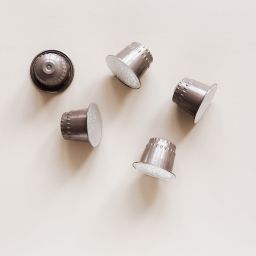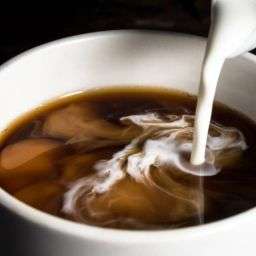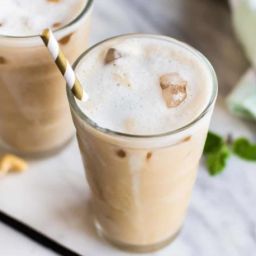
When we talk about making the perfect cup of coffee, the term “cup” can be a bit misleading. It’s not the same as the cup you use in baking, where 1 cup equals 236 ml or 8 oz. In the coffee world, a “cup” is a more fluid concept (pun intended!).
- Cooking “Cup” vs. Coffee “Cup”: In cooking, a cup is a precise measurement, but in coffee, it varies. Some coffee machines define a cup as 5 oz (about 150 ml), which is different from the 8 oz cooking cup.
- Implications of Different Cup Sizes: This difference means that your coffee recipe might need tweaking. If your coffee machine uses the 5 oz standard, you’ll need to adjust your coffee and water ratio accordingly.
The Golden Ratio in Coffee Brewing
The Golden Ratio in coffee brewing is a game-changer. It’s a simple guideline that can elevate your coffee game from “meh” to “wow.”
- What is the 1:18 Ratio? This ratio means using 1 part coffee to 18 parts water. For instance, for every gram of coffee, you use 18 ml of water.
- Quality of Your Brew: This ratio is crucial for extracting the perfect flavor. It’s not just about the strength but the balance and taste of your coffee.
- Personal Taste Adjustments:
- Everyone’s taste is different: You might find the golden ratio too strong or too weak for your liking. That’s totally okay!
- Experimentation is key: Start with the 1:18 ratio and adjust. If you like your coffee stronger, increase the coffee amount slightly. For a lighter brew, do the opposite.
There’s no one-size-fits-all in coffee brewing. Your perfect cup might be different from the standard, and that’s the beauty of it. The golden ratio is a starting point, not a strict rule. So, grab your coffee and water, and start experimenting to find your ideal balance.

Converting Coffee Measurements
Converting coffee measurements can be like trying to solve a puzzle. You’ve got weight, volume, grams, milliliters, tablespoons… it’s enough to make your head spin! But don’t worry, let’s break it down:
- Weight vs. Volume:
- Weight is all about how heavy something is. For coffee, this is usually measured in grams.
- Volume is about how much space something takes up. This is where milliliters or tablespoons come into play.
- Why Convert? Different recipes and machines use different measurements. Converting them ensures you’re using the right amount of coffee and water every time.
- Converting to Grams and Milliliters:
- A standard coffee measure is 2 tablespoons, which equals about 10.6 grams.
- Remember, 1 cup of water (in volume) is about 236 ml. But in coffee terms, a “cup” might be only 150 ml.
- Standard Coffee Measure in Tablespoons:
- Most coffee lovers use tablespoons for measuring. It’s easy and practical.
- But remember: A tablespoon of coffee can vary in weight depending on the grind size and type of coffee.
Coffee Scoops and Their Sizes
Ever wondered about that little thing called a coffee scoop? It’s more important than you might think!
- What’s a Coffee Scoop?
- It’s a measuring tool specifically for coffee. Simple, right?
- Typically, one scoop equals one tablespoon.
- Scoop Size Variations:
- Not all scoops are created equal. Some are 1 tablespoon, others are 2.
- This variation can really affect your brew. More coffee equals a stronger cup.
- Recommended Coffee Amounts:
- The general rule is 2 tablespoons (or one standard scoop) per 6 ounces of water.
- But hey, rules are made to be broken (or at least tweaked): If you like your coffee strong, add a bit more. Prefer it lighter? Use less.
How Much Ground Coffee for Different Cup Quantities
Brewing the perfect pot of coffee is an art, but it also needs a bit of math. Whether you’re making coffee for a crowd or just for yourself, knowing how much ground coffee to use is key. Let’s dive into the specifics for 8, 10, and 12 cups:
- 8 Cups of Coffee:
- For 8 cups, you’ll want to use about 67 grams of coffee. This is based on the standard coffee cup size of 5 oz per cup.
- Adjustment Tip: If your coffee machine defines a cup differently, adjust the amount accordingly.
- 10 Cups of Coffee:
- Up the amount to around 83 grams of coffee for 10 cups. Again, this is based on the 5 oz cup standard.
- Brand Specifics: Some coffee machines might recommend different amounts, so check your machine’s manual.
- 12 Cups of Coffee:
- For a big batch of 12 cups, you’re looking at about 100 grams of coffee.
- SCAA Standards: The Specialty Coffee Association of America suggests about 10 grams of coffee per 6 oz of water, which aligns with these measurements.
Learn more about Coffee Machines in this post.

Additional Brewing Tips and Considerations
Now that you’ve got your measurements down, let’s talk about some other factors that can affect your brew:
- Coffee Pot Capacities:
- Not all coffee pots are created equal. Some might brew 5 oz cups, others 6 oz, and some even more.
- Key Takeaway: Always check the total water capacity of your pot and adjust your coffee amount accordingly.
- Grind Size and Filter Types:
- The grind size of your coffee can impact the flavor. A finer grind can make a stronger brew, while a coarser grind is milder.
- Filter Types: Using paper filters vs. metal filters can also change the taste. Paper filters remove more oils from the coffee, resulting in a cleaner cup.
- Impact of Coffee Roast Levels:
- Darker roasts tend to have a stronger flavor, so you might need less coffee compared to a lighter roast.
- Experiment: Try adjusting the amount of coffee based on the roast level. You might find your perfect balance.
FAQs
Coffee brewing can be full of mysteries, but let’s clear up some common questions and misconceptions. Here are some FAQs straight from the “People Also Ask” section:
- How does the type of coffee affect the amount I should use?
- Different types of coffee (like light, medium, or dark roast) can affect the strength and flavor. Lighter roasts might need a bit more coffee to match the strength of darker roasts.
- Can I reuse coffee grounds?
- Technically, yes, but it’s not recommended. Reused grounds will make a much weaker and less flavorful cup.
- Does the grind size really matter?
- Absolutely! A finer grind is great for espresso, while a coarser grind works better for French press. The grind size affects extraction and, therefore, the taste.
- How important is water temperature?
- Very important! Ideally, your water should be between 195°F and 205°F. Too hot, and you’ll burn the coffee; too cold, and you won’t extract enough flavor.
Summarizing Coffee Measurement Insights
So, we’ve dived into the world of coffee measurements, ratios, and brewing tips. Here’s a quick recap:
- The Golden Ratio (1:18 coffee to water) is a great starting point.
- Adjust the amount of coffee based on your cup size and personal taste.
- Experiment with grind size, water temperature, and coffee types.
There’s no one-size-fits-all in coffee brewing. It’s all about finding what works for you. So go ahead, play around with these guidelines, and brew that perfect cup that makes your mornings just a little bit brighter.









